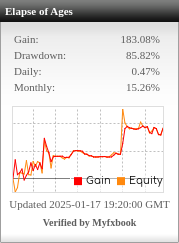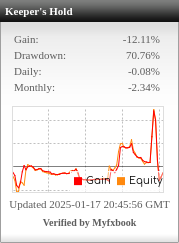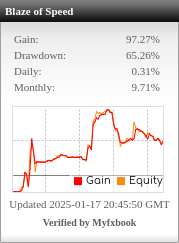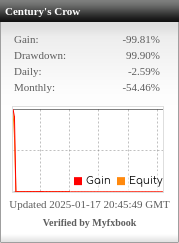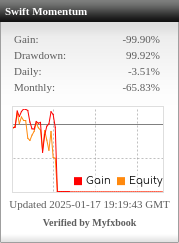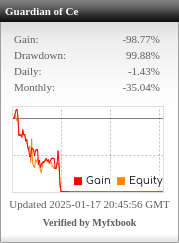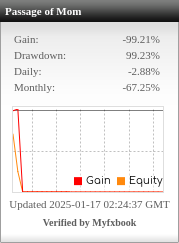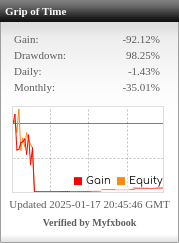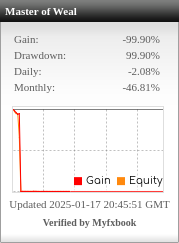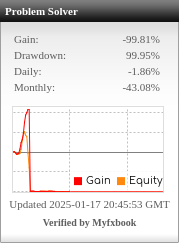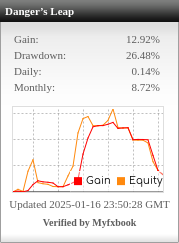Table of Contents
Here’s a detailed analysis of the performance of the Fusion of Elements EA for XAUUSD (Gold) on the M30 timeframe based on the provided Strategy Tester Report:
Profitability
- Total Net Profit:
- The net profit of $69,382.24 from a starting deposit of $5,000 is moderate, but the profitability is less impressive compared to other EAs in your portfolio.
- The Profit Factor of 1.52 (gross profit $202,493.56 vs. gross loss $133,111.32) suggests the EA generates a modest edge in profitability.
- Expected Payoff:
- An expected payoff of $8.37 per trade is relatively low, highlighting a dependence on trade volume for overall profitability.
- Winning and Losing Trades:
- The EA has a win rate of 38.25%, which is significantly lower than the other EAs analyzed.
- Despite a low win rate, the average profit trade ($63.90) is larger than the average loss trade (-$26.01), which partially offsets the frequent losses.
- Largest Trades:
- The largest profit trade was $1,252.96, slightly larger than the largest loss trade of -$1,053.60, reflecting limited variance between extreme wins and losses.
Risk and Drawdown
- Absolute and Maximal Drawdown:
- Absolute drawdown: $2,585.24 — moderate but notable given the modest profits.
- Maximal drawdown: $5,099.48 (8.75%) shows acceptable risk levels but requires careful monitoring.
- The Relative drawdown of 57.85% indicates significant periods of equity drawdowns, which could deter risk-averse traders.
- Risk per Trade:
- The EA suffered 25 consecutive losses but kept financial damage minimal at -$259.50 during the streak.
- The largest consecutive loss series incurred -$1,976.40 over 2 trades, suggesting occasional spikes in risk exposure.
Efficiency
- Trade Frequency:
- Executed 8,286 trades over the backtest period, averaging around 2.8 trades per day, leveraging high-frequency trading on the M30 timeframe.
- Consistency:
- The longest winning streak was 12 trades (profit $163.06), showing limited streak potential.
- The EA averages 2 consecutive wins versus 3 consecutive losses, reflecting a challenging balance between gains and losses.
Key Observations
- Profitability vs. Drawdowns:
- The EA achieves profits, but the low win rate and high relative drawdown raise concerns about sustainability, particularly in volatile markets.
- Trade Quality:
- While profitable trades significantly outweigh loss trades in size ($63.90 vs. -$26.01), the low win rate (38.25%) makes overall performance less reliable.
- Scalability:
- The EA’s performance may struggle with larger lot sizes due to the relatively high relative drawdown and modest profit factor.
- High-Frequency Trading Dependency:
- With over 8,000 trades, the EA relies heavily on high-frequency trading, which increases sensitivity to spreads, slippage, and trading costs.
Recommendations for Optimization
- Improve Entry Criteria:
- Review the entry logic to improve the win rate and reduce the high number of loss trades (61.75%). Refinements could involve adding filters for market conditions or time-of-day optimizations.
- Enhance Risk Management:
- Reduce the impact of consecutive loss streaks by implementing tighter stop-loss controls or diversifying risk across multiple setups.
- Reduce Drawdowns:
- Focus on minimizing the relative drawdown (57.85%), which could be achieved by adjusting position sizing or improving exit strategies during adverse market conditions.
- Optimize Trade Frequency:
- Reevaluate the trading frequency to balance quality over quantity, as the current volume of trades may reduce net profitability due to transaction costs and slippage.
- Test Under Realistic Conditions:
- Since the backtest used the Control Points model (a crude method), it is critical to retest the EA using Every Tick modeling for more accurate and reliable results.
Final Verdict
The Fusion of Elements EA demonstrates moderate profitability with acceptable drawdowns but is hindered by a low win rate, high relative drawdown, and dependency on high-frequency trading. While it generates consistent gains, it is less robust than other EAs in your portfolio. With strategic optimizations and more precise backtesting, this EA could see improved performance. However, its current risk-reward profile may not appeal to conservative traders or those seeking smoother equity curves.










